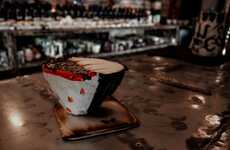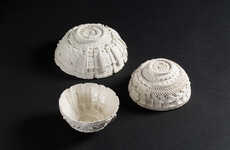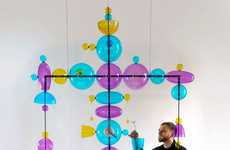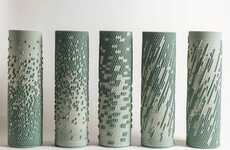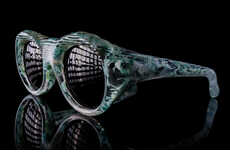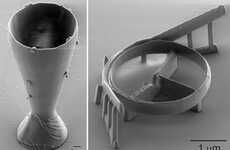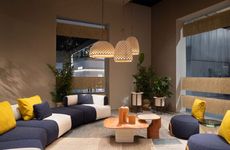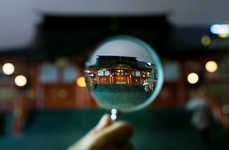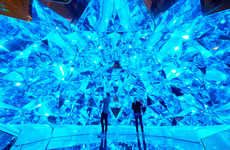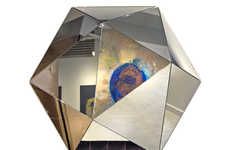
These Bespoke Molds Update the Art of Modern Glass Making
Laura McQuarrie — June 25, 2015 — Art & Design
References: beekingdomglass & 3dprint
The sculptural glassware has been prized for centuries and even today, the delicate details included in modern glass making by master glassblowers blows the mind. However, the craft is now being further enhanced with the aid of 3D printing.
After discovering that he had an interest in both glassblowing and 3D printing, artist Tim Belliveau and Armel Desrues set out to create a digital model for a mold that could be used when shaping blown glass.
With the aid of a computer, the glassblowers are now able to create incredible geometric shapes during the glass-shaping process. Although glass pieces are typically sculpted to be smooth and curvy, this way of shaping glass opens up a huge range of possibilities for crafting faceted designs to suit a variety of modern aesthetics.
After discovering that he had an interest in both glassblowing and 3D printing, artist Tim Belliveau and Armel Desrues set out to create a digital model for a mold that could be used when shaping blown glass.
With the aid of a computer, the glassblowers are now able to create incredible geometric shapes during the glass-shaping process. Although glass pieces are typically sculpted to be smooth and curvy, this way of shaping glass opens up a huge range of possibilities for crafting faceted designs to suit a variety of modern aesthetics.
Trend Themes
1. 3d-printed Glass Molds - The use of 3D printing technology to create glassblowing molds presents a disruptive innovation opportunity for the glassware industry.
2. Geometric Glass Shapes - The ability to shape glass into intricate geometric designs through the use of digital models and computer-assisted techniques offers a disruptive innovation opportunity for modern glassmaking.
3. Faceted Glass Designs - The introduction of faceted glass designs enabled by 3D-printed molds opens up new possibilities for creating modern aesthetics in glassware, creating a disruptive innovation opportunity for the design industry.
Industry Implications
1. Glassware - The application of 3D-printed molds in glassblowing presents a disruptive innovation opportunity for the traditional glassware industry.
2. 3D Printing - The integration of 3D printing technology in glassblowing molds highlights a disruptive innovation opportunity for the 3D printing industry.
3. Design - The ability to create intricate geometric and faceted glass designs using 3D-printed molds presents a disruptive innovation opportunity for the design industry.
1.7
Score
Popularity
Activity
Freshness

